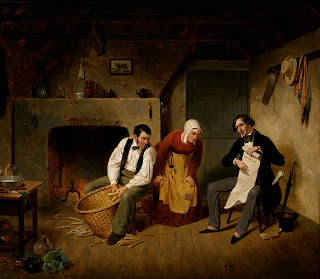I've been safely back in Kansas for almost a week and have spent the last several days getting back in the thick of it. Love being home and seeing my wife and two of the kiddos. Talked to one of the older boys and getting in touch with the other two is on my list for tonight. Am glad to be back at school. I'm chasing the wind trying to get everything ready but ... its all good.
The third day of the Clarice Smith National Teacher Institute was part art and part technology. During the morning we padded out into the gallery to try a couple more exercises. The one I liked the best asked you to look at a piece, in our case they were photos by artist Lee Friedlander, and write a postcard length description of what you saw. Mine was a marker showing the western-most part of the US in 1793. In my 'postcard' I mentioned that the marker was evidence our our 'wanderlust' as Americans.
This would be a great short writing exercise. Don't think of it as 'edumacation'. Just write a note to a friend.
Am going to try this with my students. I think I'll start with these photos. The bottom one is from the Sedgwick County Historical Museum. The top one I've used for a year or so but don't know its story.
 | ||
| AJ Pullian (photographer), Hamilton Intermediate School, ca. 1925. Sedgwick County Historical Museum. |
The afternoon and much of the time remaining at the Smithsonian was dedicated to working with technology. The interesting thing about the way they introduced it was that nothing we used was 'cutting edge'. The idea seemed to be to use current technology well. They introduced us to Audacity, Voicestream and Prezi. Audacity and Voicestream are audio capture programs and were used to record a podcast we'd been asked to create for out piece of art. Prezi is a presentation format. Think of PowerPoint except non-linear. The goal was to create a podcast and then a five minute presentation incorporating the technology and out pieces of art. I didn't see our podcast online but like this one so I'll show it as an example.





